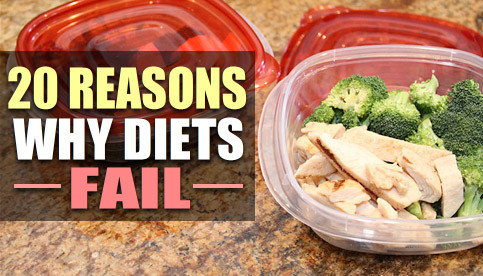Empower Your Wellness Journey
Discover tips and insights for a healthier lifestyle.
Slicing Calories: The Secret to a Successful Cutting Diet
Discover the secrets of a successful cutting diet and learn how to slice calories for effective weight loss and lasting results!
Top 5 Mistakes to Avoid on Your Cutting Diet
Embarking on a cutting diet can be challenging, and many people make common mistakes that hinder their progress. One of the top mistakes is drastically cutting calories without understanding your body's needs. This can lead to muscle loss, a slowed metabolism, and nutrient deficiencies. Instead, aim for a moderate calorie deficit to ensure you maintain muscle mass while shedding fat. Also, carb cycling can help in regulating energy levels and avoiding plateaus.
Another mistake to avoid is neglecting macronutrient balance. While reducing caloric intake, many individuals overlook the importance of consuming adequate protein, healthy fats, and complex carbohydrates. To optimize fat loss and support muscle recovery, aim for a balanced diet that incorporates all three macronutrients. Additionally, skipping meals in an attempt to cut calories can result in binge eating later, derailing your efforts. Instead, focus on frequent, nutrient-dense meals to keep your metabolism active and energy levels stable.

How to Calculate Your Ideal Caloric Deficit for Effective Weight Loss
To effectively lose weight, it's crucial to first determine your ideal caloric deficit. This deficit is the number of calories you need to consume less than your body burns in a day to promote weight loss. Begin by calculating your Total Daily Energy Expenditure (TDEE), which accounts for your basal metabolic rate (BMR) and your activity level. You can use the BMR and TDEE calculator found on Bodybuilding.com for an accurate estimate. Once you have your TDEE, you can set a caloric deficit between 500 to 1000 calories per day, as this generally leads to a sustainable weight loss of 1 to 2 pounds per week.
After establishing your caloric deficit, it’s important to monitor your progress and adjust as necessary. Track your food intake using tools like MyFitnessPal or MyPlate to ensure you maintain this deficit consistently. Remember that weight loss is not linear; fluctuations are normal. If you find you are not losing weight as expected, reassess your caloric intake and activity levels to ensure you are still in a deficit. Additionally, ensure you are consuming a balanced diet rich in whole foods to support your overall health during your weight loss journey.
The Best Foods to Include in Your Cutting Diet for Optimal Results
When embarking on a cutting diet, selecting the right foods is crucial for achieving optimal results. Incorporating lean proteins is essential, as they help maintain muscle mass while promoting fat loss. Consider including options like chicken breast, turkey, and fish, which are not only low in calories but also rich in nutrients. Additionally, healthline.com suggests integrating plant-based proteins such as lentils and quinoa to offer variety and additional health benefits.
Another critical component of your cutting diet is consuming plenty of fiber-rich vegetables. These foods can help you feel fuller for longer, reducing overall calorie intake. Integrate leafy greens like spinach and kale, cruciferous vegetables such as broccoli and cauliflower, and colorful options like bell peppers and carrots. According to eatright.org, these vegetables are low in calories and packed with essential vitamins and minerals that support your weight loss journey.